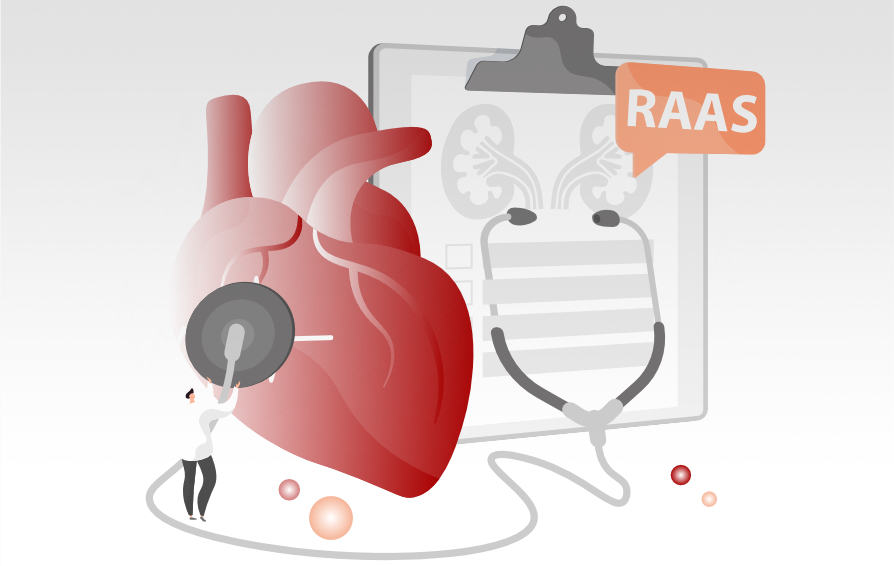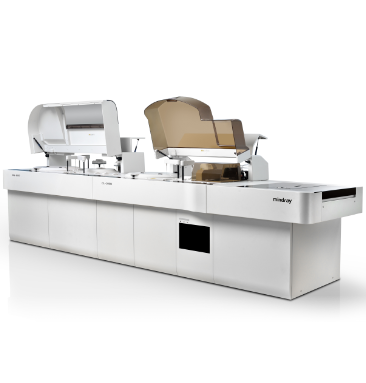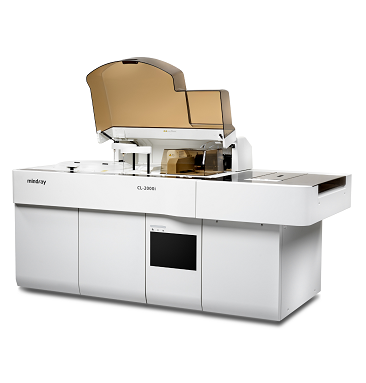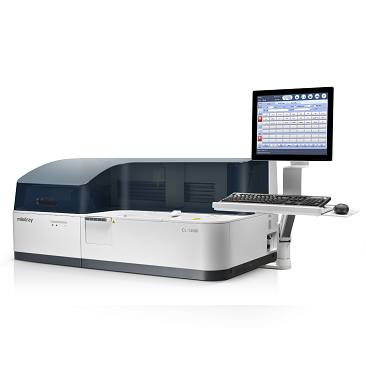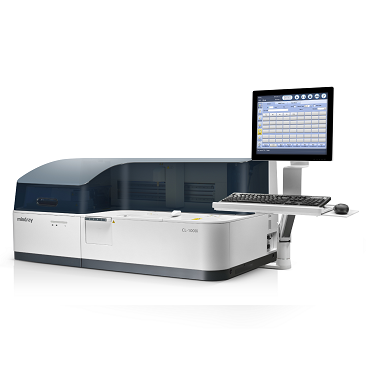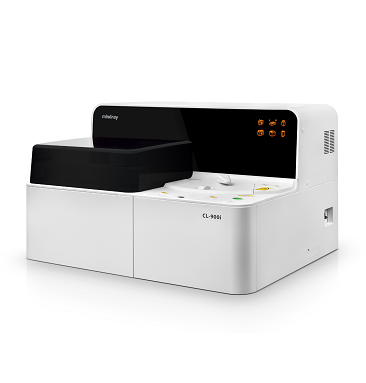What is hypertension?
Hypertension, also called high blood pressure, is newly defined as systolic blood pressure consistently above 130 mm Hg and/or diastolic blood pressure consistently above 80 mm Hg.[1] Hypertension is a pretty common medical condition all over the world. According to the WHO data, 1.28 billion adults aged 30-79 years are estimated to suffer from hypertension, approximately 4 in 5 adults (79%) with hypertension not under control.
As a silent killer, hypertension usually shows no warning symptoms or signs. It could be very serious if not treated and is a major cause of premature death worldwide.[2]
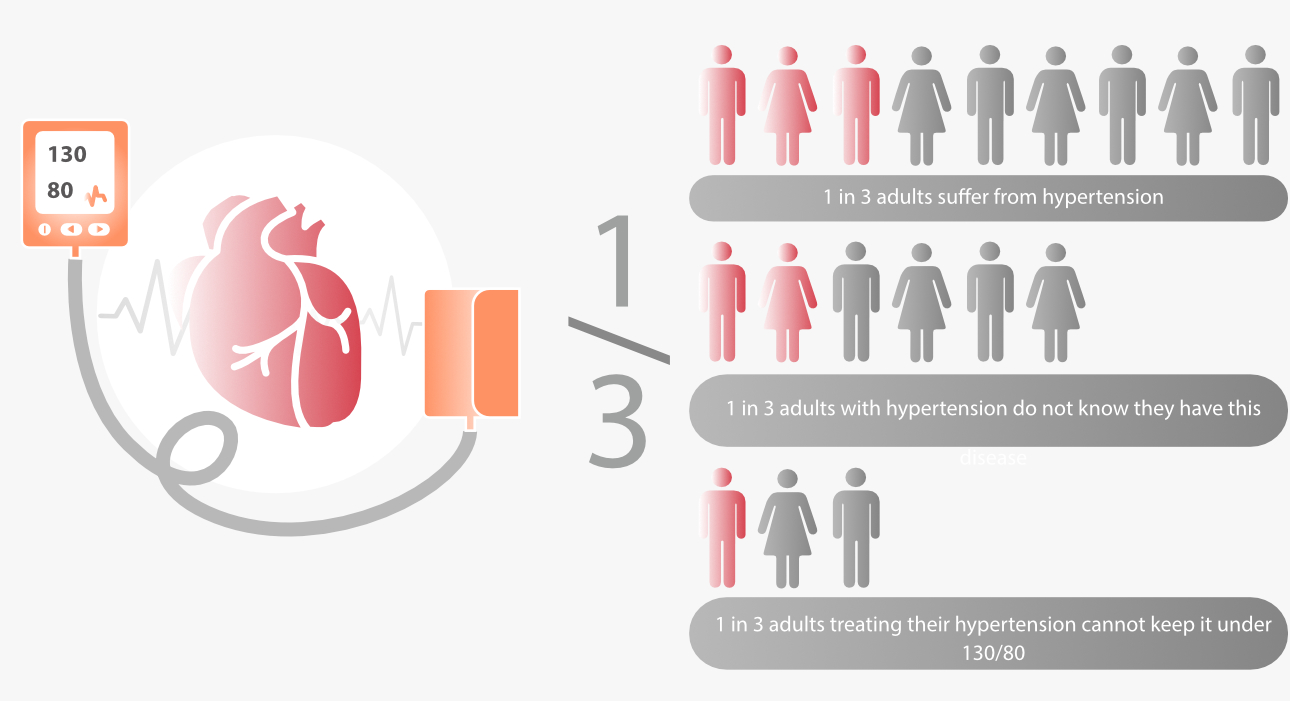
Hypertension can lead to cardiovascular diseases (CVDs), including acute coronary syndrome, arrhythmias, heart failure and many other diseases such as brain damage, chronic kidney failure, aortic aneurysm, retinal disease, sexual dysfunction, etc.[3]
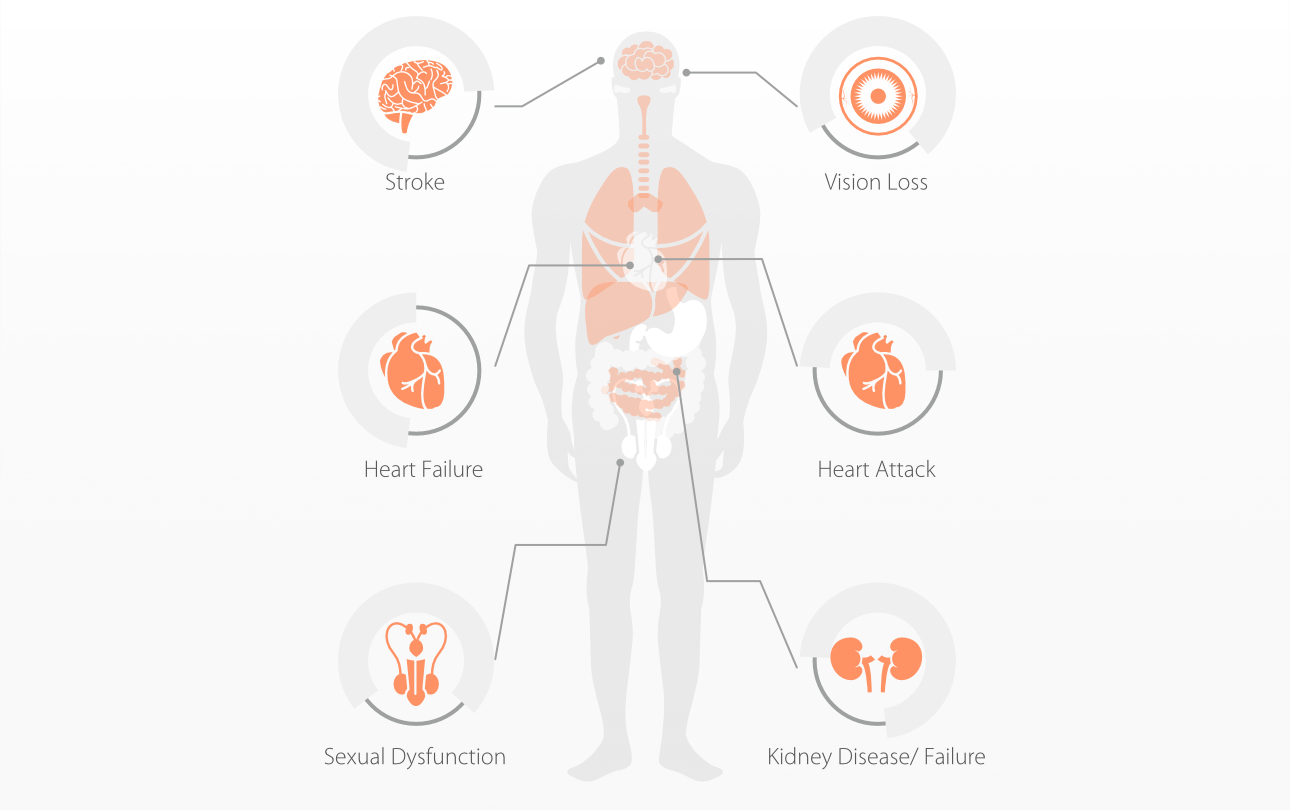
Hypertension is classified into two categories, primary hypertension and secondary hypertension. Primary hypertension, also referred to as essential hypertension, accounts for 90% to 95% of all cases of hypertension but does not have a single known cause. As for secondary hypertension, it is rare and only occurs in 5-10% of the population, caused by a known disease or condition like Glomerular disease, Cushing syndrome or thyroid problems.[4]

RAAS and its relationship with hypertension
The renin-angiotensin-aldosterone system (RAAS) is a complex system of hormonal cascade involved in the regulation of blood pressure and blood volume on a long-term basis. In normal conditions, RAAS can regulate blood pressure as it comprises three major substances, including renin, angiotensin II (AII) and aldosterone (ALD), to balance the fluid and electrolyte levels (Na+, K+, Cl-) in our body. For example, the salt reabsorption and water retention in the kidney can be increased by RAAS to affect systemic blood pressure when there is a reduced blood volume.[5]
However, the impaired RAAS or alteration of RAAS function with the abnormal concentration of the above substances will result in more elevated blood pressure.
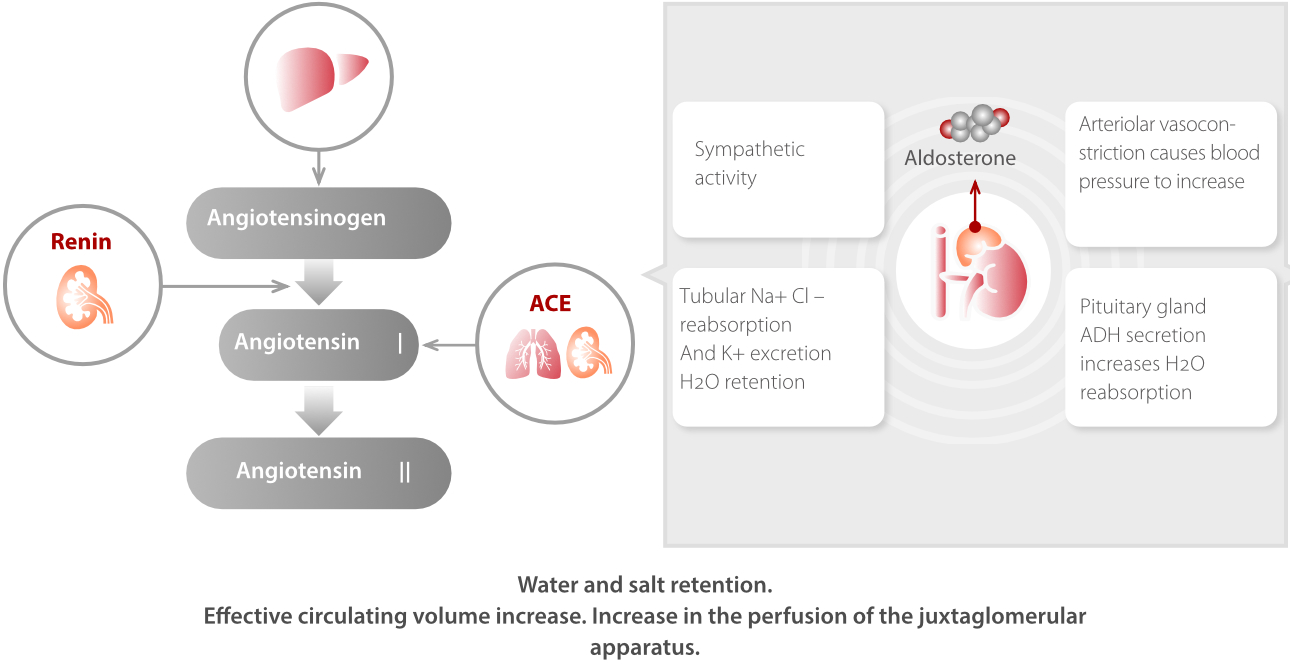
Primary aldosteronism (PA) and its diagnosis
Primary aldosteronism (PA) is characterized as a common kind of secondary hypertension associated with suppressed plasma renin activity (PRA), increased plasma aldosterone concentration (PAC), and insuppressible aldosterone levels in the blood or urine. Caused by autonomous overproduction of aldosterone from the adrenal glands, PA results in excessive sodium reabsorption, leading to hypertension and suppression of renin-angiotensin II through its chronic regulation in the meantime.[6]
PA diagnosis is insufficient

Due to insufficient screening, PA is usually under-diagnosed. As a result, the current Endocrine Society guidelines recommend the screening for PA among populations where the prevalence has been reported to be the highest. Typically, the diagnosis procedure of PA includes screening test, confirmatory test and subtype study. The most often recommended screening tool for PA is the aldosterone-to-renin ratio (ARR), also named PAC/PRA, and the most widely-accepted definition of a positive screen result is a PAC ≥ 10 ng/dL with an ARR > 30 ng/dL per ng/mL/h.[7]
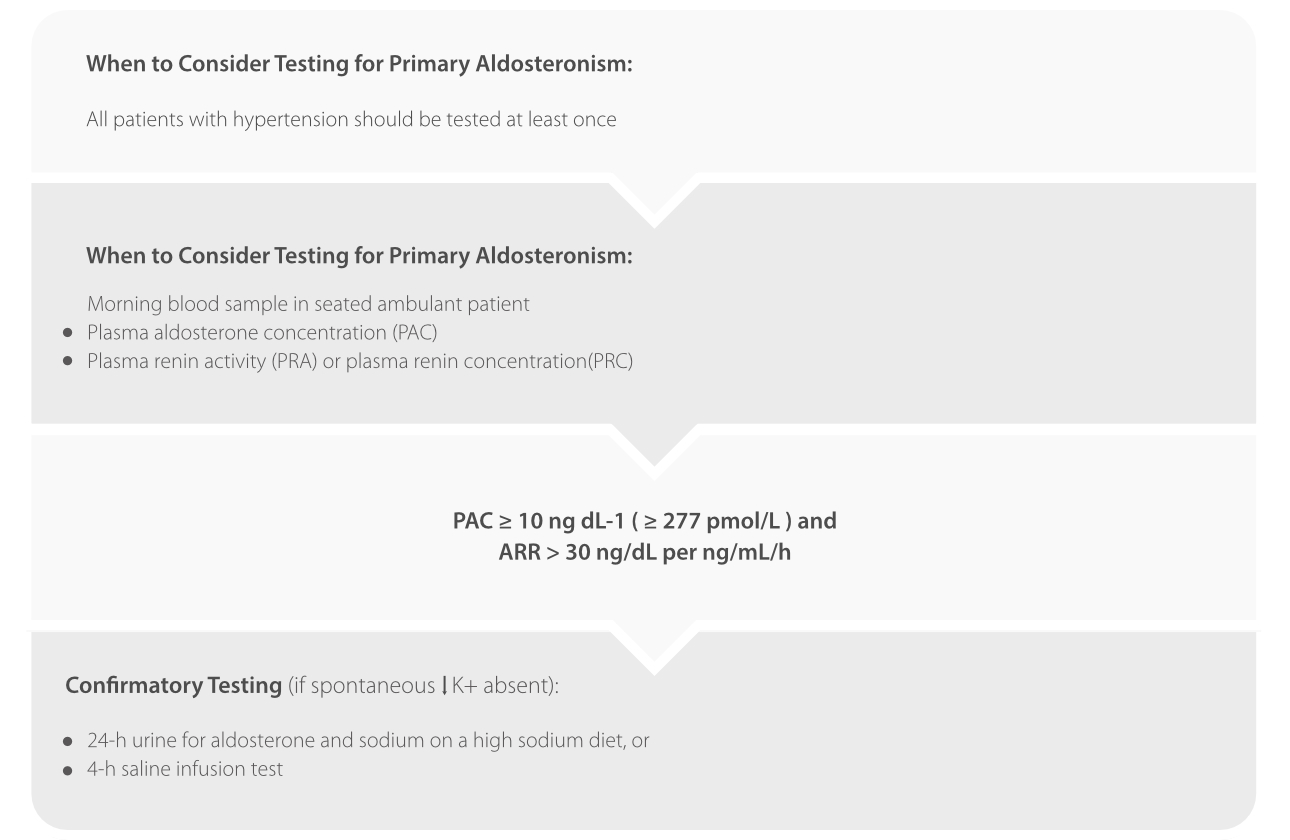
As a global leading provider of in-vitro diagnostics solutions, Mindray can offer renin and aldosterone assays on our CLIA system to help screen PA with relatively small sample volume, short TAT, good open stability and calibration stability, excellent precision and wide measuring range.
References:
[1] The American College of Cardiology/American Heart Association Guideline for the Prevention, Detection, Evaluation, and Management of High Blood Pressure in Adults (2017 Guideline)
[2] Hypertension. WHO.
https://www.who.int/health-topics/hypertension
[3] Health threats from high blood pressure. American Heart Association.
https://www.heart.org/en/health-topics/high-blood-pr essure/health-threats-from-high-blood-pressure
[4] Secondary hypertension. Mayo Clinic.
https://www.mayoclinic.org/diseases-conditions/secon dary-hypertension/symptoms-causes
[5] Renin-Angiotensin-Aldosterone System (RAAS). Cleveland Clinic.
https://my.clevelandclinic.org/health/articles/24175-ren in-angiotensin-aldosterone-system-raas
[6] Choy K W, Fuller P J, Russell G, Li Q, Leenaerts M, Yang J et al. Primary aldosteronism BMJ 2022; 377: e065250 doi:10.1136/bmj-2021-065250
[7] Hundemer G L, Vaidya A. Primary Aldosteronism Diagnosis and Management: A Clinical Approach. Endocrinol Metab Clin North Am. 2019; 48(4): 681-700. doi: 10.1016/j.ecl.2019.08.002
